CHI3L1
-
Official Full Name
chitinase 3-like 1 (cartilage glycoprotein-39) -
Overview
Chitinases catalyze the hydrolysis of chitin, which is an abundant glycopolymer found in insect exoskeletons and fungal cell walls. The glycoside hydrolase 18 family of chitinases includes eight human family members. This gene encodes a glycoprotein member of the glycosyl hydrolase 18 family. The protein lacks chitinase activity and is secreted by activated macrophages, chondrocytes, neutrophils and synovial cells. The protein is thought to play a role in the process of inflammation and tissue remodeling. [provided by RefSeq, Sep 2009] -
Synonyms
CHI3L1;chitinase 3-like 1 (cartilage glycoprotein-39);GP39;ASRT7;GP-39;YKL40;CGP-39;YKL-40;YYL-40;HC-gp39;HCGP-3P;hCGP-39;chitinase-3-like protein 1;39 kDa synovial protein;cartilage glycoprotein 39
Recombinant Proteins
- Rat
- Human
- Mouse
- Rhesus macaque
- E.coli
- HEK293
- Wheat Germ
- Mammalian Cells
- CHO
- Human Cells
- Insect Cells
- In Vitro Cell Free System
- His
- Myc
- SUMO
- GST
- T7
- Non
- DDK
- Avi
- Fc
- Flag
Background
What is CHI3L1 protein?
CHI3L1 (chitinase 3 like 1) gene is a protein coding gene which situated on the long arm of chromosome 1 at locus 1q32. Chitinases catalyze the hydrolysis of chitin. The glycoside hydrolase 18 family of chitinases includes eight human family members. This gene encodes a glycoprotein member of the glycosyl hydrolase 18 family. The protein is thought to play a role in the process of inflammation and tissue remodeling. The CHI3L1 protein is consisted of 383 amino acids and its molecular mass is approximately 42.6 kDa.
What is the function of CHI3L1 protein?
CHI3L1 protein also known as YKL-40 is closely related to the immune response, regulating the activity of macrophages, T cells and other immune cells, and influencing the immune response. It can also induce the proliferation and migration of inflammatory cells, and can also promote the release of cytokines, thus participating in the regulation of inflammation and immune response. In addition, it can regulate the proliferation and invasion of cancer cells and participate in the occurrence of diseases.
CHI3L1 Related Signaling Pathway
CHI3L1 protein may be associated with a variety of signaling pathways, including PI3K/Akt, MAPK/ERK, NF-κB, etc., and is involved in regulating cell activity, inflammatory response, and tumor growth. Among them, CHI3L1 can promote the nuclear translocation of NF-κB subunit in glioma cells by binding to actin α4 (ACTN4) and NFKB1, thereby enhancing the activation of NF-κB signaling pathway. After CHI3L1 is released into the tumor microenvironment (TME), it can interact with CD44 expressed on tumor-associated macrophages to activate the AKT pathway.
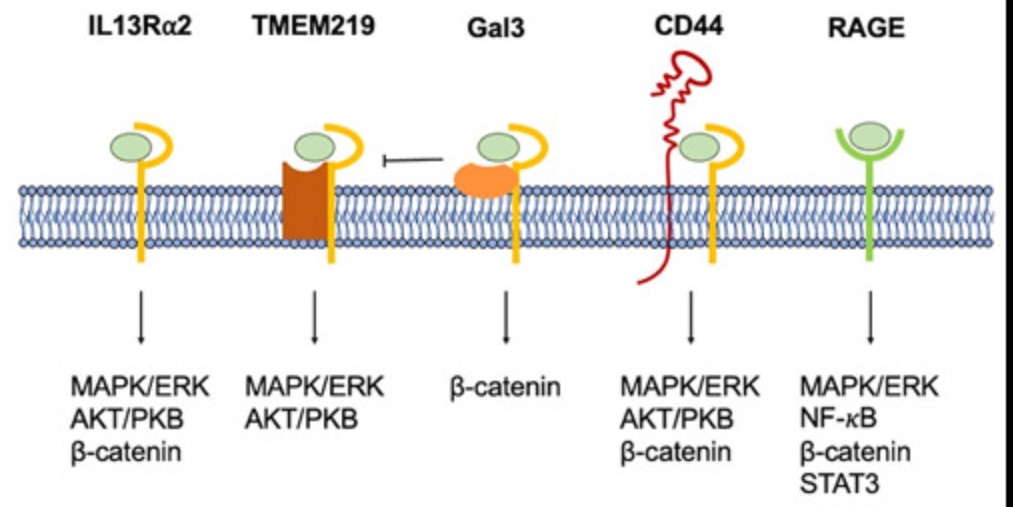
Fig1. The known CHI3L1 receptors and the signaling pathways activated by CHI3L1-receptor binding. (Kevin Connolly, 2023)
CHI3L1 Related Diseases
CHI3L1 protein is closely related to the occurrence and development of many diseases, including inflammatory diseases, tumors, asthma, neurological diseases, cardiovascular diseases, etc. CHI3L1 is upregulated in a variety of cancers, including lung, colon, stomach, and breast cancers. CHI3L1 is associated with the occurrence and development of inflammatory diseases such as rheumatoid arthritis and inflammatory bowel disease.
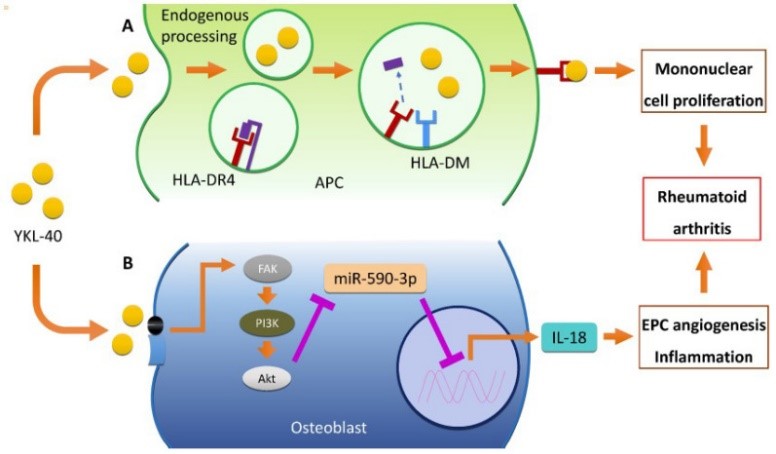
Fig2. Role of YKL-40 in RA pathogenesis. (A) YKL-40 binds to the HLA-DR4, inducing mononuclear cell proliferation through HLA-DM dependent MHC II-mediated presentation of APCs. (B) YKL-40 also activates FAK/PI3K/Akt pathway in osteoblast, resulting in IL-18 production and EPC angiogenesis through inhibition of miR-590-3p. (Kalthoum Tizaoui, 2022)
Bioapplications of CHI3L1
The clinical application of CHI3L1 protein is still being explored, for example, it has potential application prospects as a biomarker to assist disease diagnosis, prognosis assessment and the development of therapeutic strategies targeting CHI3L1. In addition, at the cellular level, changes in CHI3L1 expression can be used to study dynamic changes in the cytoskeleton, such as the transformation process of f-actin to G-actin. These studies contribute to understanding the fundamental biological processes underlying cell migration and morphological change.
Case Study
Case study 1: Hailong Hao, 2021
This study aims to explore the relevance between YKL-40 and recurrence and progression of bladder cancer, and determine whether YKL-40 can be used as a potential target in patients with bladder cancer. They analyzed the invasion and metastasis ability by Transwell method. The YKL-40 expression levels in cell lines were analyzed by Western blot and qPCR.
The increase of YKL-40 level, especially in tumour group, was related to tumour pathological stage and tumour invasion and metastasis. The cell lines with YKL-40 high expression had stronger invasion and metastasis ability. The expression levels of N-cadherin and Vimentin in YKL-40 overexpressed SVHUC1 cells were increased. YKL-40 promoted the migration and invasion of bladder cancer cells by up regulating the EMT gene expression. The YKL-40 expression is closely related to the invasion and migration of bladder cancer.

Fig1. The serum YKL-40 level in bladder cancer patients was significantly higher than that in healthy controls.
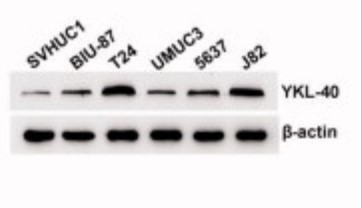
Case study 2: Apeng Chen, 2021
Glioblastoma (GBM), the most common and lethal primary brain tumor, with a median survival rate of only 15 months, remains incurable despite intensive multimodal treatment of surgical resection, radio-chemotherapy, and antiangiogenic therapy with bevacizumab. Therefore, effective therapies for patients with GBM are urgently needed. Repolarization of TAMs toward an antitumor M1-like phenotype results in tumor regression by producing proinflammatory cytokines and key molecules to stimulate T cell antitumor response. This suggests a potential therapeutic strategy of converting M2-like TAMs to M1-like TAMs for the treatment of GBM.
Here, the researchers show that chitinase-3-like 1 (CHI3L1), also known as human homolog YKL-40, predominately modulates the GBM TME using unbiased approaches. CHI3L1 signaling selectively regulates tumor infiltration and cell migration of MDMs and MG by forming distinct protein-binding complexes. CHI3L1 protein complexes further reprogram TAMs to regulate T cell–mediated immune response in GBM progression.
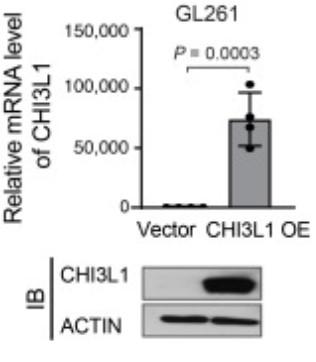
Fig3. qRT-PCR and IB analyses of the expression levels of CHI3L1 mRNA and protein in GL261 overexpressing vector control or human CHI3L1 gene.
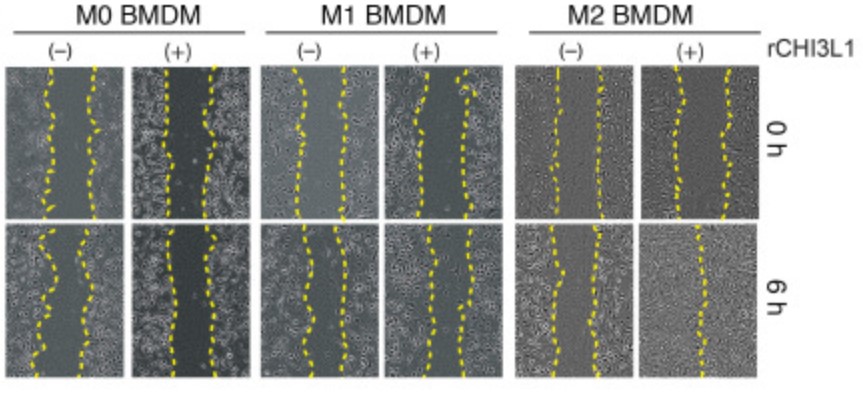
Quality Guarantee
High Purity
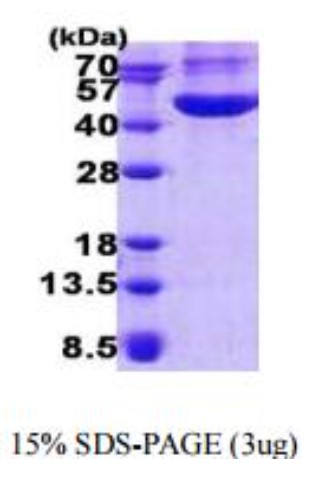
Fig1. SDS-PAGE (CHI3L1-7262H) (PROTOCOL for western blot)
.
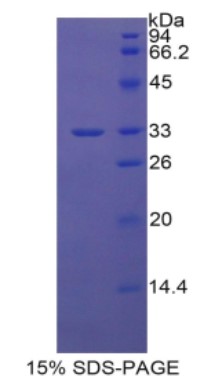
Fig2. SDS-PAGE (CHI3L1-6990H) (PROTOCOL for western blot)
Involved Pathway
CHI3L1 involved in several pathways and played different roles in them. We selected most pathways CHI3L1 participated on our site, such as , which may be useful for your reference. Also, other proteins which involved in the same pathway with CHI3L1 were listed below. Creative BioMart supplied nearly all the proteins listed, you can search them on our site.
| Pathway Name | Pathway Related Protein |
|---|
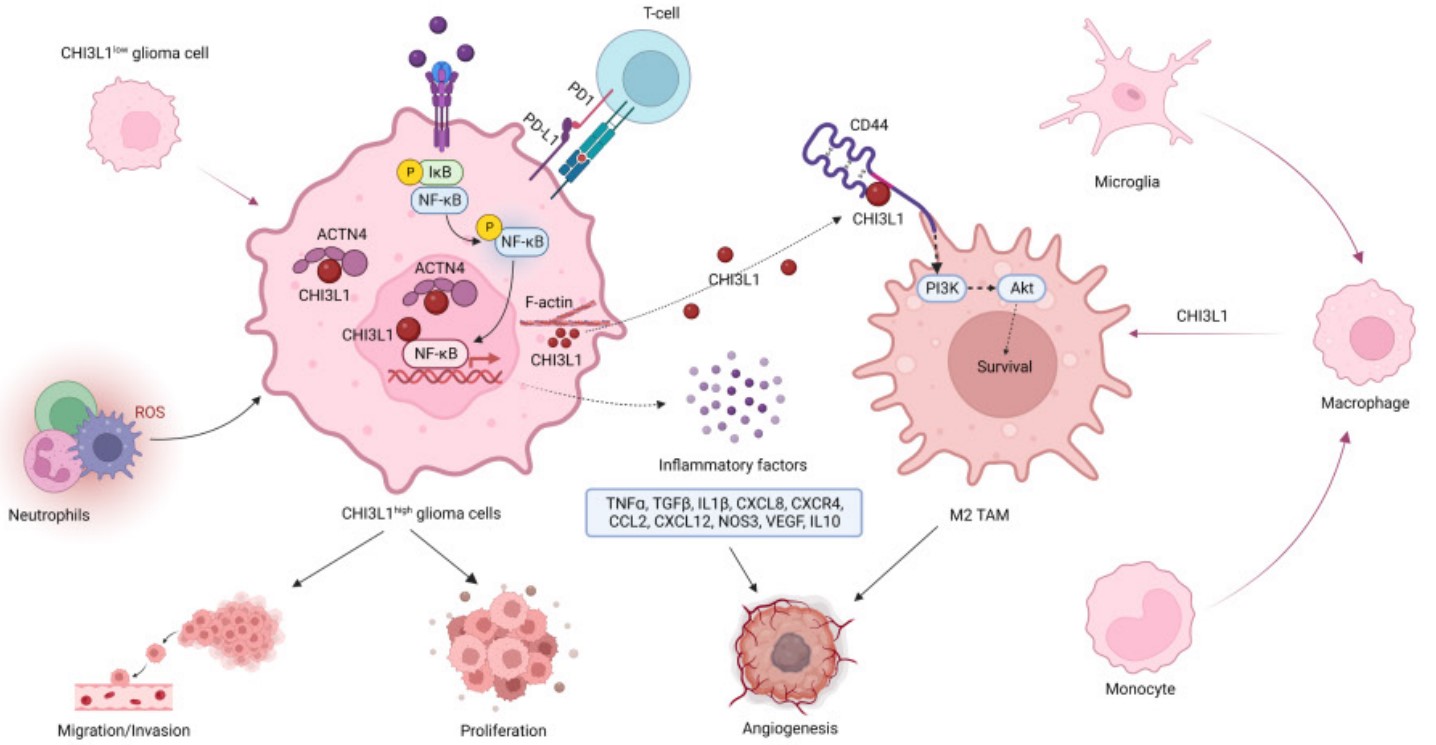
Fig1. The working model of CHI3L1 on glioma cells and TME. (Ting Zhao, 2022)
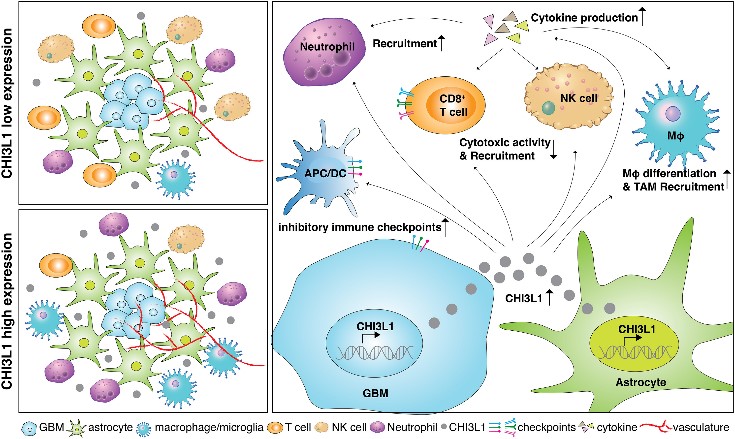
Fig2. Summary cartoon showing the potential role of CHI3L1 in immunosuppressive GBM tumor microenvironment. (Fei Li, 2022)
Protein Function
CHI3L1 has several biochemical functions, for example, carbohydrate binding,chitin binding,NOT chitinase activity. Some of the functions are cooperated with other proteins, some of the functions could acted by CHI3L1 itself. We selected most functions CHI3L1 had, and list some proteins which have the same functions with CHI3L1. You can find most of the proteins on our site.
| Function | Related Protein |
|---|---|
| extracellular matrix structural constituent | FBLN1,COL5A3B,COL2A1A,CD4,MATN1,COL27A1A,COMP,MATN3,TINAGL1,LAMB1 |
| carbohydrate binding | CNTN1,GALNT9,LGALS7B,CD302,POC1BL,PRG3,PRG2,SIGLEC6,KLRF1,KLRB1F |
| NOT chitinase activity | CHI3L2,Chil3 |
| chitin binding | OVGP1,CHID1,FIBCD1,CHI3L2,CHIA.2,CHIA,CTBS,CHIA.3,Chil3,CHIA.4 |
Interacting Protein
CHI3L1 has direct interactions with proteins and molecules. Those interactions were detected by several methods such as yeast two hybrid, co-IP, pull-down and so on. We selected proteins and molecules interacted with CHI3L1 here. Most of them are supplied by our site. Hope this information will be useful for your research of CHI3L1.
Resources
Research Area
Related Services
Related Products
References
- Zhang, JP; Yuan, HX; et al. Increased expression of Chitinase 3-like 1 and microvessel density predicts metastasis and poor prognosis in clear cell renal cell carcinoma. TUMOR BIOLOGY 35:12131-12137(2014).
- Bonella, F; Costabel, U; et al. Biomarkers in Connective Tissue Disease-Associated Interstitial Lung Disease. SEMINARS IN RESPIRATORY AND CRITICAL CARE MEDICINE 35:181-200(2014).



